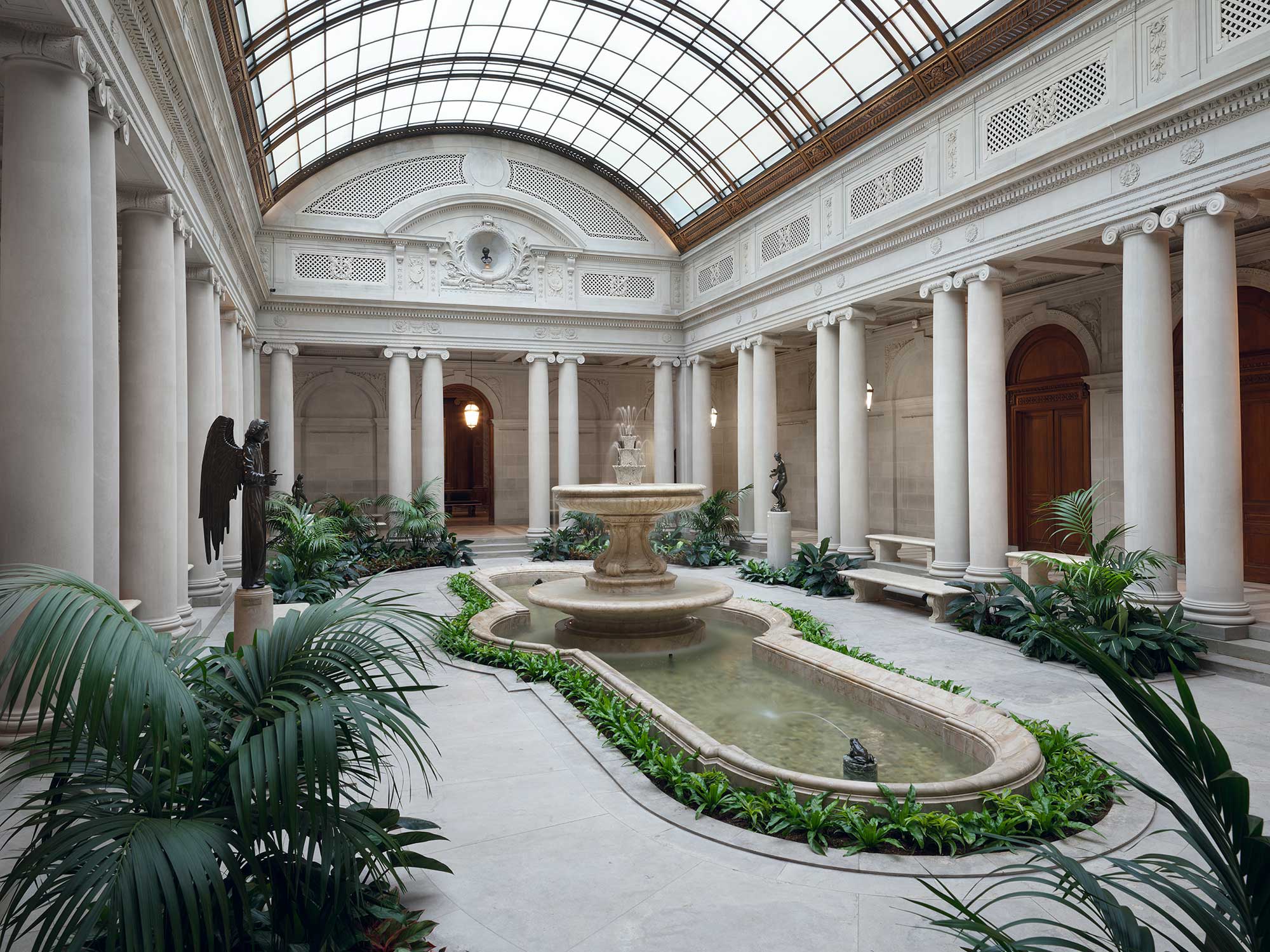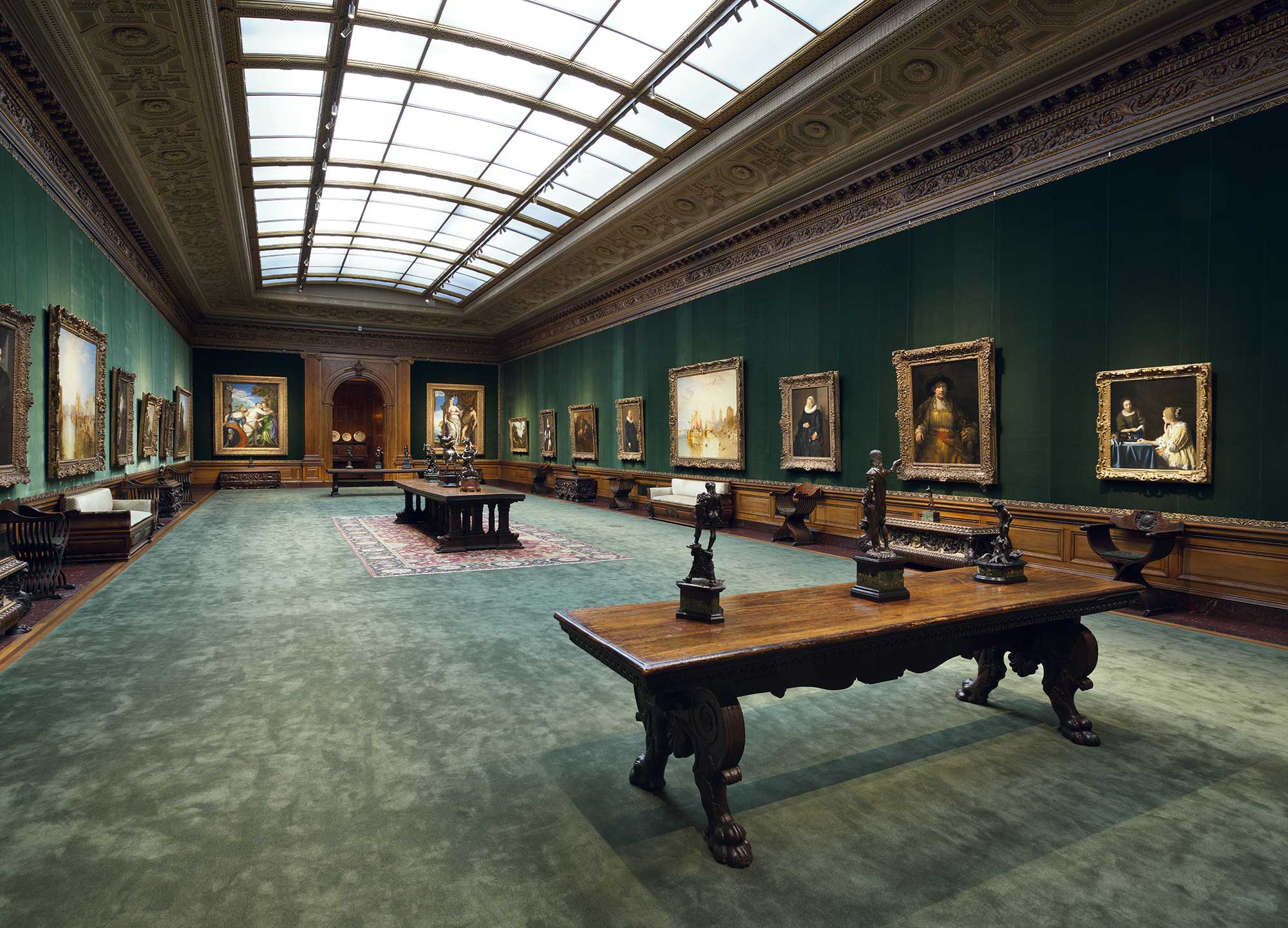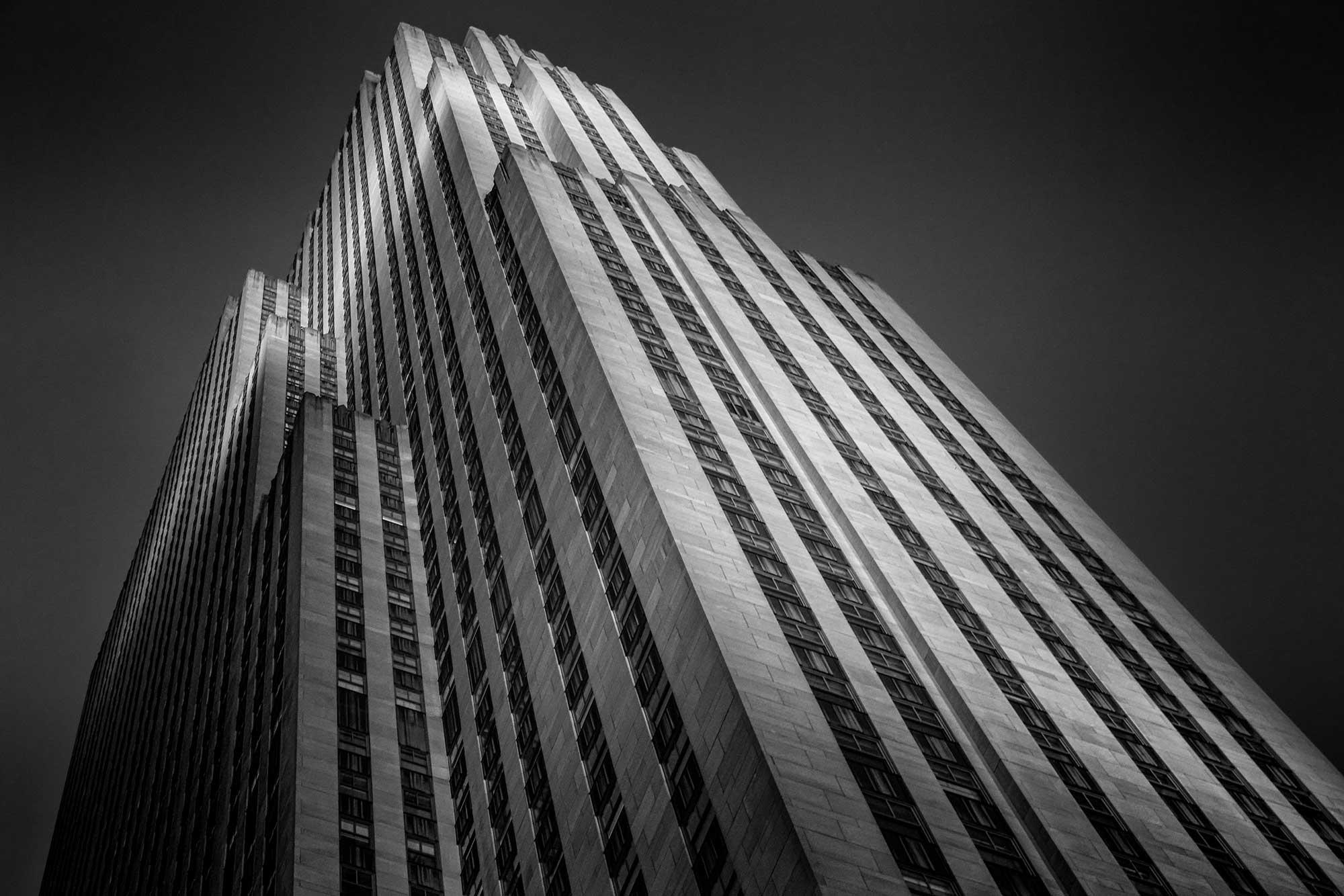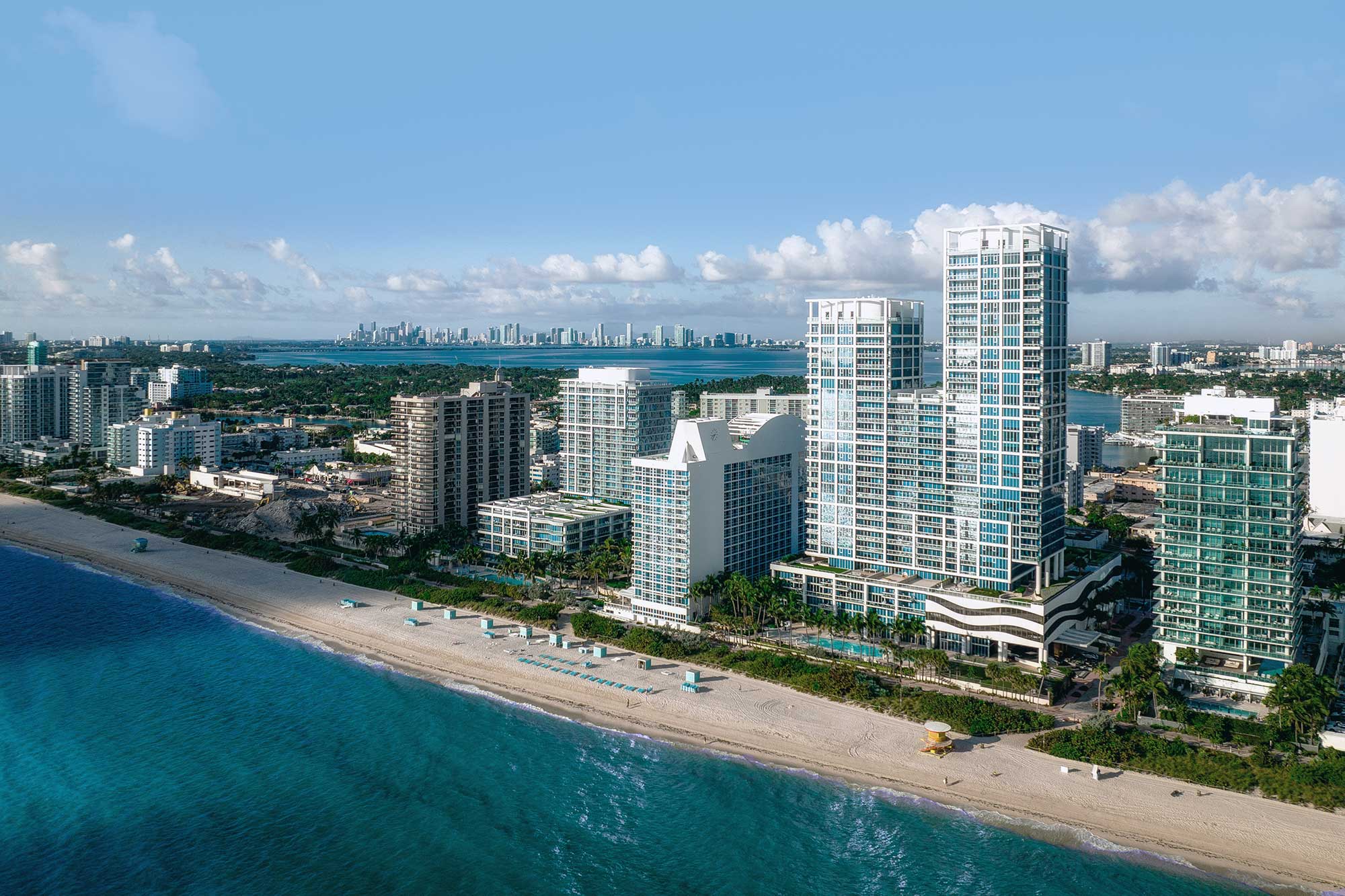The Frick Collection Returns
Private Mansion to Public Masterpiece
Completed in 1914, the home was built by Frick, a steel magnate from Pittsburg, PA, who occupied it until his death in 1919. It opened to the public as a house museum in 1935 where the collection of art and decorative objects continues to grow, making it one of the most impressive private collections in the world and one of New York’s most treasured and visited attractions.
Frick wrote that he wanted “a well-arranged house, simple, in good taste, not ostentatious.” There is no ballroom, for example, but there is a bowling alley in the basement (not on view), a pipe organ at the top of the grand staircase leading up to the second floor, and a soothing fountain surrounded by a garden court among other simple features. The house stretches one full block along New York’s elegant Fifth Avenue just across from Central Park.
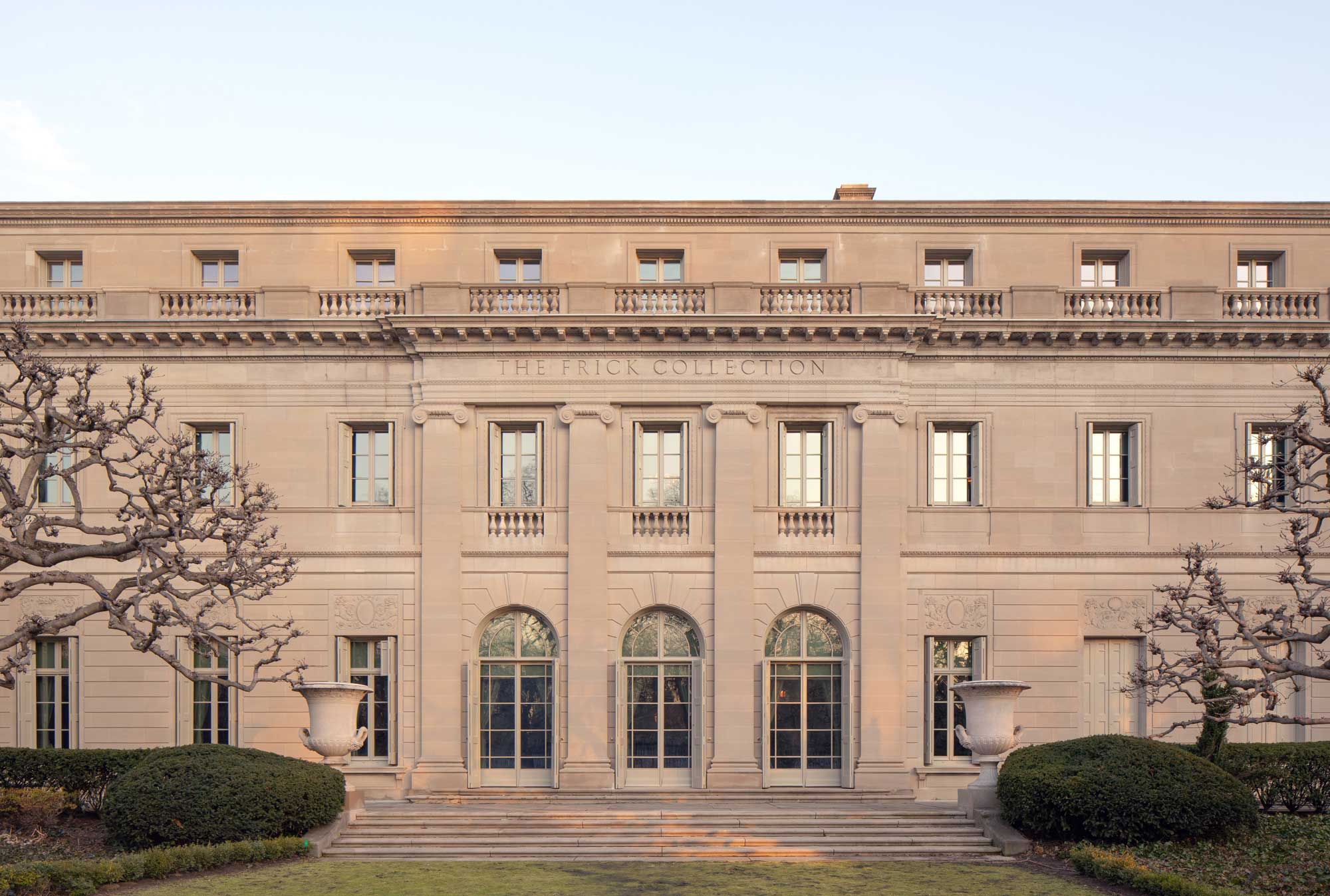
Timeless Spaces and Artistic Icons
Certain areas in the house are just as Frick left them, such as the Living Hall, which features masterpieces by El Greco, Holbein, and Bellini, among others. The West Gallery (1915) was the largest space of its kind in New York City when it was finished and is much the same as it’s been for the past 90 years—with stunning works by Rembrandt, and Van Dyck among others, lining its walls.
As visitors enter through East 70th Street. Visitors will observe a newly established section on the right, comprising two floors that feature a new gift shop and a café named Westmoreland, in honor of Frick’s private railroad car. New additions also feature special exhibition galleries where a three-painting show titled Vermeer’s Love Letters will run through August 2025. And, on a lower level, there is a new performing arts space for concerts and lectures.
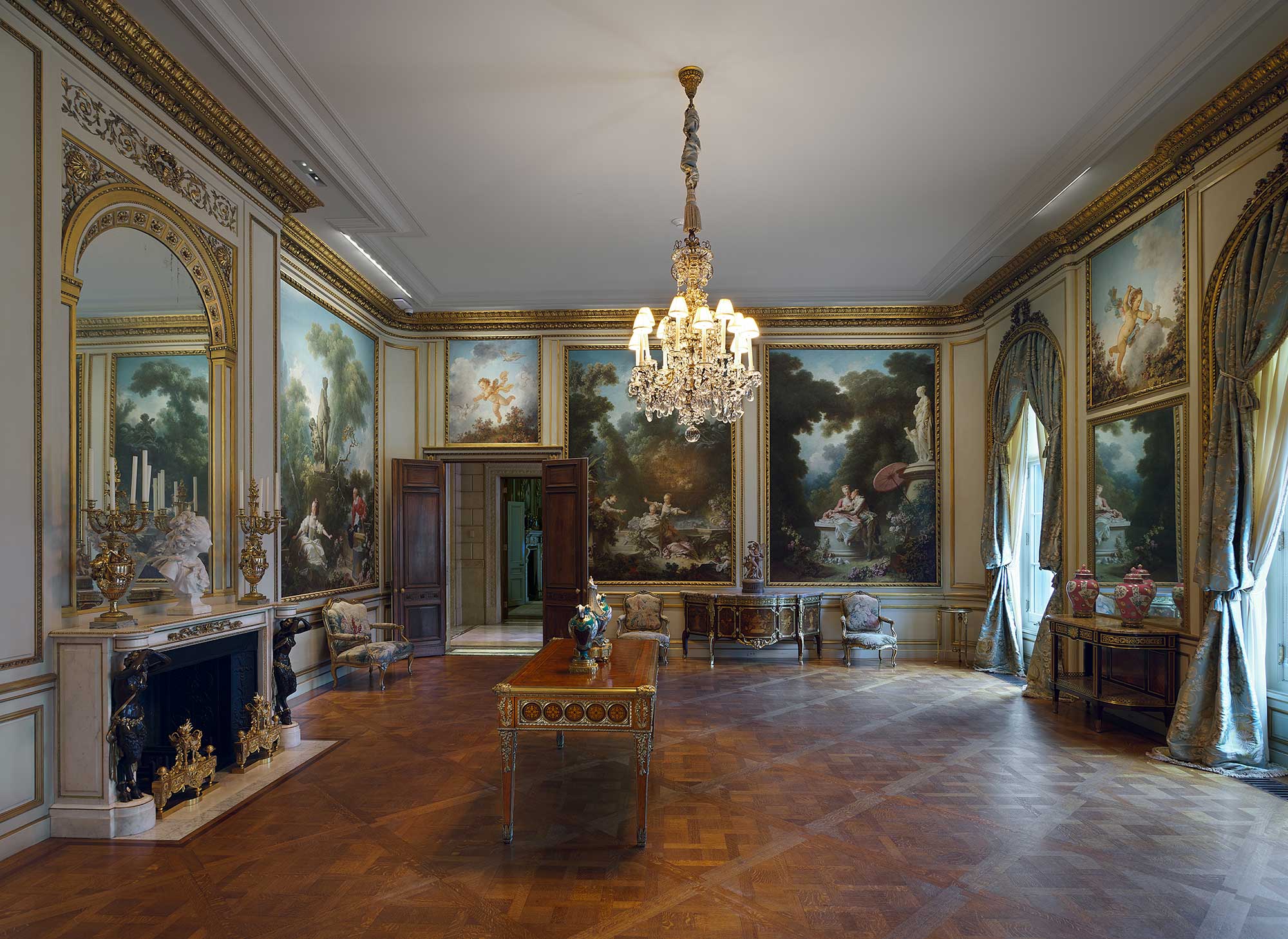
A Scholarly Gem
The Frick Art Research Library, one of the world’s greatest art reference facilities, is also open to the public, especially to those wishing to do research with the aid of this unparalleled collection and staff.
